What exactly is keratosis pilaris?
Select independently determines what we cover and recommend. When you buy through our links, we may earn a commission. Learn more.
If you’re struggling with rough and bumpy skin caused by keratosis pilaris, you’re not alone: The skin condition is extremely common, affecting about 50% to 80% of teenagers and 40% of adults at some point during their lives, according to the Cleveland Clinic. “I don't really think of keratosis pilaris as a condition or a disease because it’s so common — I personally like to think of it as more of a skin variant,” said Dr. Michael Cameron, founder of Cameron Dermatology and assistant professor at Mount Sinai in New York City.
SKIP AHEAD How we picked the best treatments | Best keratosis pilaris treatments | How to treat keratosis pilaris
Keratosis pilaris is a chronic condition that can’t be fully cured, but there are several treatments to reduce the appearance of bumps. To learn more, we spoke to dermatologists about what causes keratosis pilaris, what ingredients to look for when treating the condition and rounded up some of our experts’ favorite products to keep it under control.
What is keratosis pilaris and what causes it?
Keratosis pilaris — often referred to simply as “KP” — creates bumps on that skin that are commonly described as goosebumps, “strawberry skin” or “chicken skin” due to their small, rough and scaly appearance. These bumps are caused by dead skin cells building up and clogging hair follicles, which creates a roughness on the surface of the skin. They can appear as red, white or discolored bumps, and they’re typically found on the outer, upper arms, thighs and buttocks in adults and sometimes on the cheeks in children.
“What ends up happening is there’s an abnormal, higher production of keratin and accumulation within the hair follicle. And when it over produces and it doesn't exfoliate in its normal routine, it accumulates and forms those bumps,” said Dr. Naveed Sami, board-certified dermatologist and professor of medicine at the UCF College of Medicine. Our experts noted that these bumps aren’t usually painful or itchy, and concerns surrounding keratosis pilaris are usually aesthetic.
The dermatologists we spoke to noted there isn’t necessarily a cause of keratosis pilaris — it’s mostly inherited and more likely among people who are prone to eczema. “It's usually present more commonly when people are younger and, sometimes, it naturally goes away when people are older,” said Dr. Michele Farber, board-certified dermatologist at Schweiger Dermatology Group.
For many people, keratosis pilaris can flare up with hormonal fluctuations — for example, around the menstrual cycle, during pregnancy or puberty, according to Dr. Lindsey Bordone, board-certified dermatologist and assistant professor of dermatology at Columbia University Medical Center. Sami noted that symptoms typically flare up around the wintertime when the humidity is low and the skin is the driest.
How we picked the best treatments for keratosis pilaris
Dermatologists told us that maintaining a well-balanced skin care routine with exfoliating ingredients and moisturizing regularly is best for people with keratosis pilaris. Below, we compiled expert-recommended moisturizing creams, lotions and body washes to help tame bumpy skin caused by keratosis pilaris. All of the products listed contain gentle, hydrating ingredients and expert-recommended chemical exfoliants like lactic acid, salicylic acid and urea that can help remove excess dead skin cells.
Product type: The best way to diminish symptoms of keratosis pilaris is to combine exfoliating and moisturizing products. The experts we spoke to recommended moisturizing creams, lotions and body washes to help.
Ingredients: Looking for gentle, hydrating and exfoliating ingredients is the key to managing symptoms from keratosis pilaris.
Exfoliants: The dermatologists we spoke to recommended looking for chemical exfoliants like lactic acid, salicylic acid and urea.
Best keratosis pilaris treatments
The below products were recommended to us by the dermatologists we spoke to. Several of our editors have also tried many of the below products.
CeraVe SA Lotion For Rough & Bumpy Skin
The dermatologists we spoke to all recommended the CeraVe SA Lotion to help reduce symptoms of keratosis pilaris. Cameron said he often recommends this cream to his patients due to its exfoliating and moisturizing benefits, and Sami noted it’s a great over-the-counter salicylic acid and lactic acid treatment that’s readily available. “I like this product because it has lactic acid and salicylic acid to smooth, niacinamide to decrease inflammation and help the skin barrier and glycerin and ceramides to hydrate and seal in moisture,” said Dr. Robyn Gmyrek, a board-certified dermatologist at UnionDerm in New York City. CeraVe says its formula is non-comedogenic and can gently smooth the look and feel of the skin’s texture.
CeraVe SA Lotion For Rough & Bumpy Skin
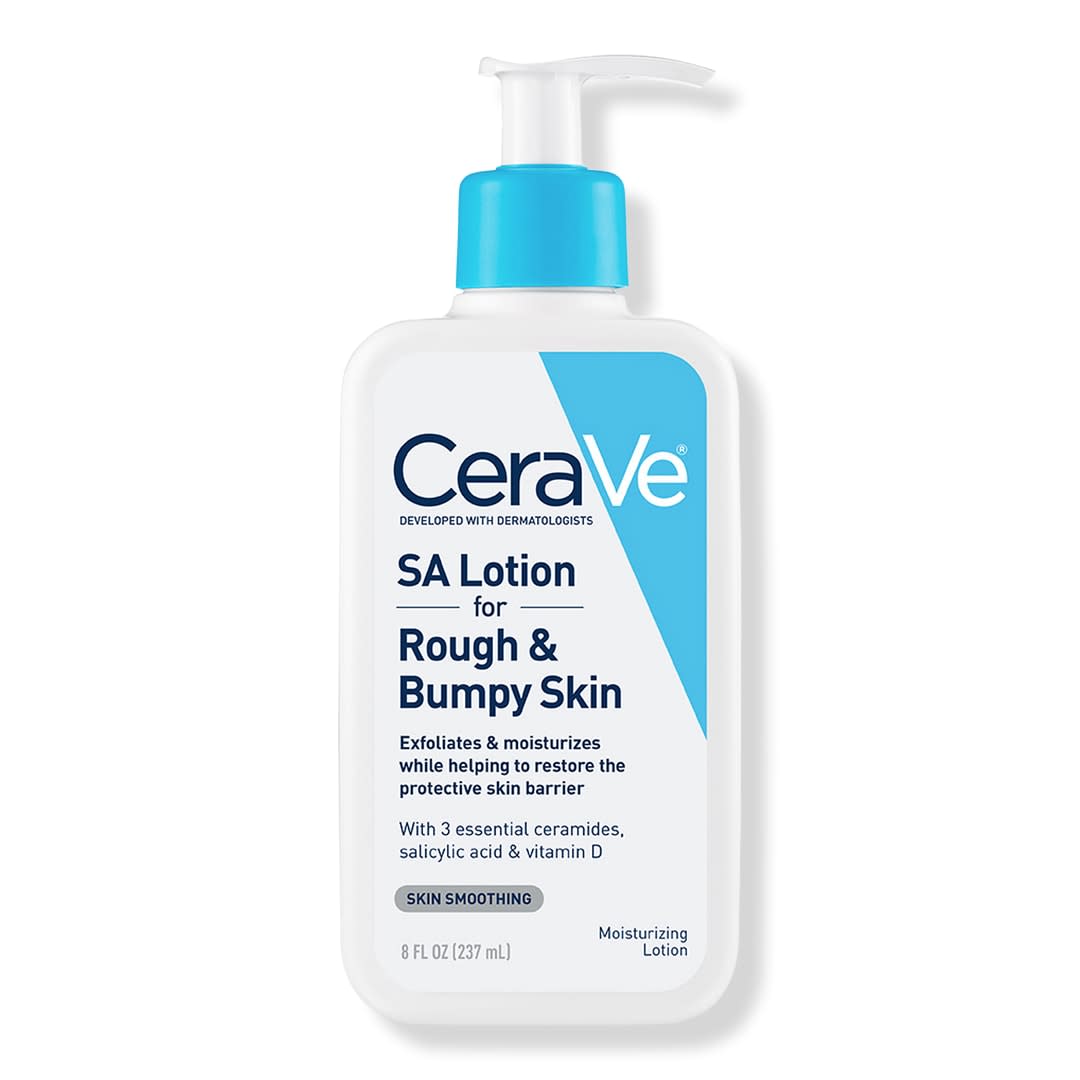
CeraVe SA Lotion For Rough & Bumpy Skin $ at Amazon
CeraVe SA Lotion For Rough & Bumpy Skin $ at Ulta
CeraVe SA Lotion For Rough & Bumpy Skin $ at Target
AmLactin Daily Moisturizing Lotion
AmLactin is another expert-favorite product that has12% lactic acid to gently exfoliate the skin. “It has the benefit of having both an exfoliating component and serving as a daily moisturizer,” Garshick said. Bordone noted it can help skin cell turnover and reduce the spiky texture associated with keratosis pilaris. AmLactin Daily Moisturizing Lotion has a non-greasy, fragrance-free and paraben-free formula, and it’s suitable to use as a face moisturizer, hand lotion or body lotion, the brand says.
AmLactin Daily Moisturizing Lotion
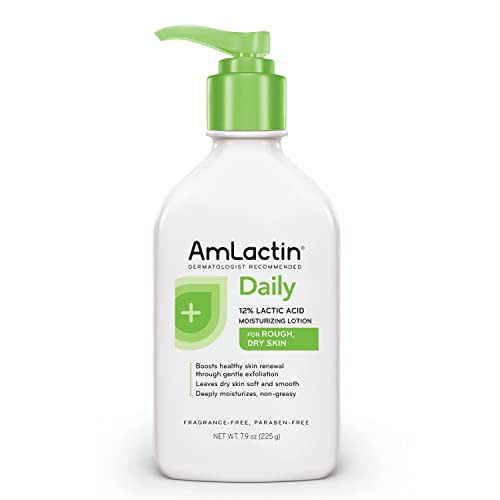
First Aid Beauty KP Bump Eraser Body Scrub
If you prefer a more physical exfoliant, this body scrub from First Aid Beauty has exfoliating particles that can help remove dead cells. “It’s great because it has glycolic acid and other exfoliating acids that can be helpful,” Farber said. It contains 10% AHAs, which the brand says can help improve the skin’s texture and smooth away bumps and roughness. First Aid Beauty recommends gently massaging the product on wet skin and using 1-2 times per week, as tolerated.
First Aid Beauty KP Bump Eraser Body Scrub
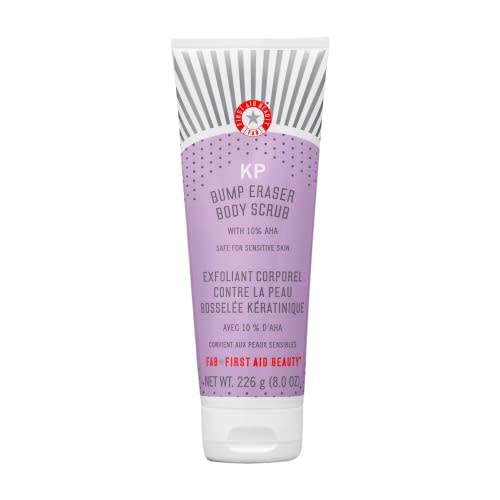
First Aid Beauty KP Bump Eraser Body Scrub $ at Amazon
First Aid Beauty KP Bump Eraser Body Scrub $ at Sephora
First Aid Beauty KP Bump Eraser Body Scrub $ at Ulta
Eucerin Roughness Relief Cream
Cameron recommended the Eucerin Roughness Relief Cream for those with keratosis pilaris to help “minimize the appearance [of bumps] and smooth out the texture.” The cream is formulated with urea, ceramides and sunflower seed oil to help lock-in moisture for up to 48 hours, according to the brand. It’s fragrance-free and suitable for daily use on sensitive skin, Eucerin says.
Eucerin Roughness Relief Cream
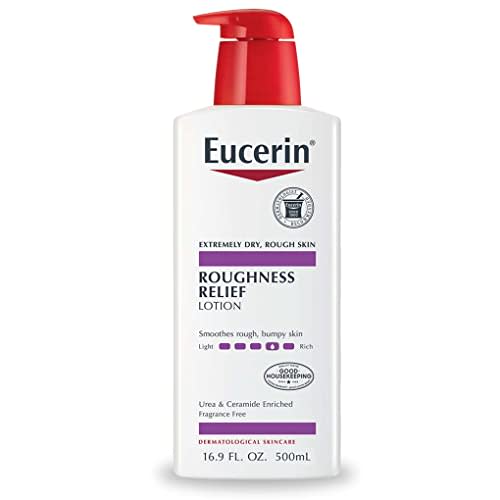
Eucerin Roughness Relief Cream $ at Amazon
Eucerin Roughness Relief Cream $ at Walmart
Eucerin Roughness Relief Cream $ at Target
Ebanel 40% Urea Cream
Experts told us that a urea cream is a great option to treat and prevent dry, rough and scaly skin. “If somebody wants to be a little bit more aggressive with their treatment, then they can add urea to their regimen,” Sami said. This option from Ebanel has 40% urea — the highest potency, though Sami noted a lower concentration works just as well — and it’s formulated with 2% salicylic acid that can provide gentle exfoliation while also moisturizing, softening and smoothing out the skin. The cream is hypoallergenic, fragrance-free and can reduce redness and inflammation thanks to ingredients like aloe vera, coconut oil and green tea leaf extract, according to the brand.
Ebanel 40% Urea Cream

Ebanel 40% Urea Cream $ at Amazon
Ebanel 40% Urea Cream $ at Walmart
Ebanel 40% Urea Cream $ at Ebanel
Gold Bond Rough & Bumpy Skin Daily Therapy Cream
Another recommendation from Cameron, the Gold Bond Rough & Bumpy Daily Therapy Cream is formulated with salicylic acid and lactic acid to gently exfoliate rough skin, as well as a combination of moisturizing ingredients to keep the skin hydrated. It has a fragrance-free, hypoallergenic formula that can be used as often as needed, according to the brand.
Gold Bond Rough & Bumpy Skin Daily Therapy Cream
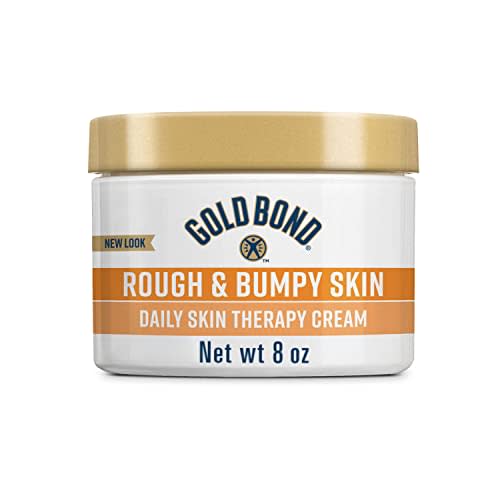
Gold Bond Rough & Bumpy Skin Daily Therapy Cream $ at Amazon
Gold Bond Rough & Bumpy Skin Daily Therapy Cream $ at Walmart
Gold Bond Rough & Bumpy Skin Daily Therapy Cream $ at Bed Bath and Beyond
DERMAdoctor KP Duty Lotion
Gmyrek recommended DERMAdoctor’s KP Duty Lotion because it contains a blend of lactic acid, urea, glycerin and ceramides to exfoliate and hydrate the skin. The lotion can be used year-round on the arms, legs, hands and feet, according to the brand.
DERMAdoctor KP Duty Lotion
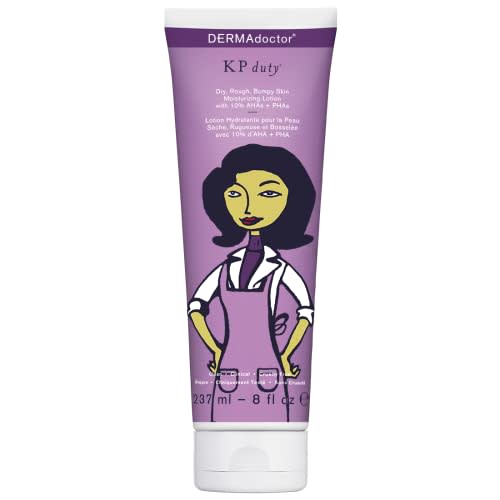
DERMAdoctor KP Duty Lotion $ at Amazon
DERMAdoctor KP Duty Lotion $ at Walmart
DERMAdoctor KP Duty Lotion $ at Macy's
CeraVe Moisturizing Cream
Sami recommended moisturizing your skin with a cream moisturizer like this option from CeraVe, which can help the skin stay hydrated longer and reduce symptoms of dryness and itchiness in cooler climates. The CeraVe Moisturizing Cream is a mild, fragrance-free moisturizer that contains ceramide to help restore and maintain the skin’s natural moisture barrier, according to the brand. CeraVe says the moisturizer can provide up to 24 hours of hydration and is suitable for all skin types.
CeraVe Moisturizing Cream
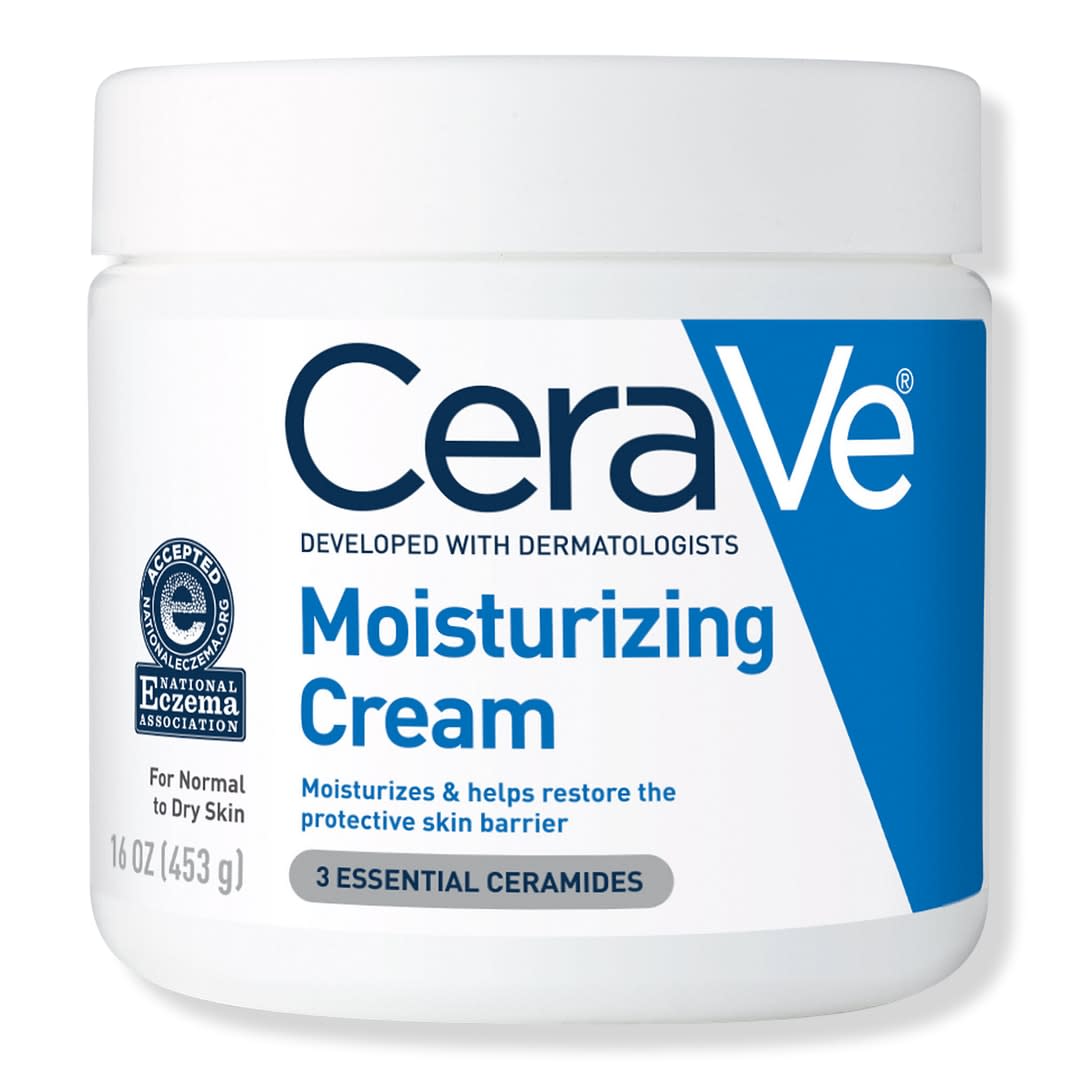
CeraVe Moisturizing Cream $ at Amazon
CeraVe Moisturizing Cream $ at Ulta
CeraVe Moisturizing Cream $ at Target
Related: Experts weigh in on the cleansers, moisturizers, and serums for sensitive skin
How to treat keratosis pilaris
Though it may naturally go away as you get older, keratosis pilaris isn’t a curable skin condition. However, you can reduce the appearance of it and smooth out the texture of the skin with the right treatment. “It’s something that we consider to be manageable as opposed to curable,” said Dr. Marisa Garshick, a board-certified dermatologist at MDCS Dermatology in New York City. “Because some people are genetically predisposed to it, they may be more likely to always experience it at a baseline level.”
The best way to diminish symptoms of keratosis pilaris is a balanced combination of exfoliating and moisturizing the skin, Garshick noted. The most effective treatment for keratosis pilaris are keratolytics — also known as chemical exfoliators — that remove the build up of dead skin cells. Sami and Garshick noted there are a few main types of keratolytic agents to consider:
Alpha hydroxy acids, including lactic acid and glycolic acid, and beta hydroxy acids like salicylic acid that can gently dissolve dead skin cells.
Urea, which has both moisturizing and exfoliating properties. Sami noted urea is available in various strengths ranging from 20% and 40%, though he noted you don't really need that high of a strength.
“Those [ingredients] are usually incorporated into cleansers and washes, and sometimes they can also be found in moisturizers,” Garshick said. In addition to a keratolytic, you can also use a gentle physical exfoliant to help remove the dead skin, but the dermatologists we spoke to advised not to overdo it and avoid using harsh scrubs on the bumps, which can actually exacerbate the issue.
Bordone noted that consistency is key: “You have to be good about putting these products on at least twice a day because, when you stop, it typically comes back.” Garshick added that investing in a product that can both moisturize and exfoliate the skin at the same time can be beneficial. “You're creating a protective mechanism for the skin where you're using other ingredients that moisturize and hydrate it, so you're protecting the skin from becoming damaged or irritated,” she said, adding that, In many cases, these exfoliating moisturizers can be used one or two times per day.
Meet our experts
At Select, we work with experts who have specialized knowledge and authority based on relevant training and/or experience. We also take steps to ensure that all expert advice and recommendations are made independently and with no undisclosed financial conflicts of interest.
Dr. Michael Cameron is a board-certified dermatologist, founder of Cameron Dermatology and assistant professor at Mount Sinai in New York City.
Dr. Naveed Sami is a board-certified dermatologist and professor of medicine at the UCF College of Medicine.
Dr. Lindsey Bordone is a board-certified dermatologist and assistant professor of dermatology at Columbia University Medical Center.
Dr. Michele Farber is a board-certified dermatologist at Schweiger Dermatology Group in Philadelphia. Dr. Farber specializes in skin cancer treatments, as well as general, cosmetic and procedural dermatology.
Dr. Marisa Garshick is a board-certified dermatologist at MDCS Dermatology in New York City and an assistant clinical professor of dermatology at NewYork-Presbyterian/Weill Cornell Medical Center.
Dr. Robyn Gmyrek is a board-certified dermatologist at UnionDerm in New York City.
SKINCARE
Catch up on Select's in-depth coverage of personal finance, tech and tools, wellness and more, and follow us on Facebook, Instagram and Twitter to stay up to date.
